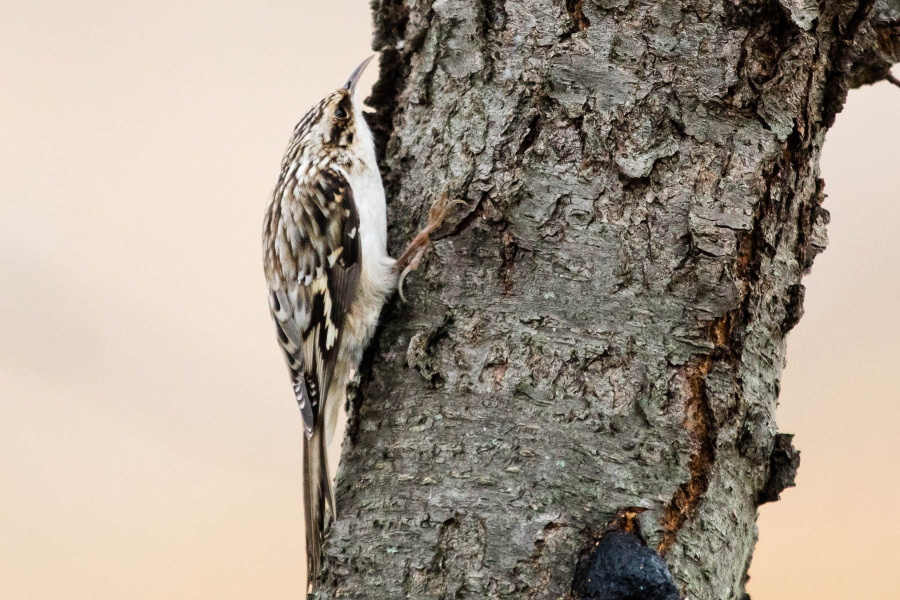A busy bird with incredible camouflage
Brown creepers are known for their unique way of foraging

If you’re looking for a bird that’s challenging to find but interesting to watch, look no further than the brown creeper (Certhia americana).
This tiny bird is about five inches long with a seven-inch wing span, and has bark-colored plumage that makes for incredible woodland camouflage. When not breeding and nesting, they spend their day engaged in a neat little foraging method. True to its name, the tiny bird puts its body close to the trunk of a tree and “creeps” upward in a corkscrew pattern, digging its beak into the wood for insects.
The brown creeper makes short work of its foraging, moving up trees with laser focus, so quickly you wonder how they can get any food at all. In the Chesapeake Bay world, you might say they’re akin to oyster shuckers and crab pickers who work at lightning speed to extract meat from shells. When the bird gets to the top of a tree, it simply flies to the bottom of another and starts the process all over again. Talk about a bird on a mission.
The brown creeper’s body is built around this unique form of foraging. It has a long and down-curved beak to pierce through bark, short legs for quick movement and a long tail that gives it the balance needed to grasp onto a tree and move upward. Male and female brown creepers look almost identical, both displaying unique tree-colored camouflage.
Whether or not you’ll find the bird depends on what part of the watershed you are in. The brown creeper breeds in the northern part of North America, on both coasts and along the Appalachian Mountains. In these areas, it can be found year-round. So if you live in New York, Pennsylvania or West Virginia, then you are likely to find brown creepers in the woods throughout the year.
In Maryland, Virginia, Washington, D.C. and Delaware, you are only likely to see brown creepers during the winter. The bird prefers mature evergreen or mixed evergreen-deciduous forests, but during winter you can find them in a wider variety of woods as well as parks and backyards. They prefer foraging on large, healthy trees.
The brown creeper is part of the treecreeper family and is the only treecreeper you’ll find in North America. Their population is stable throughout much of their range, and they are fairly common in New York and Pennsylvania. But whether you’ll actually be able to spot the stealthy bird amid a cluster of trees and woodland debris, well, that’s another thing altogether.

Comments
There are no comments.
Thank you!
Your comment has been received. Before it can be published, the comment will be reviewed by our team to ensure it adheres with our rules of engagement.
Back to recent stories